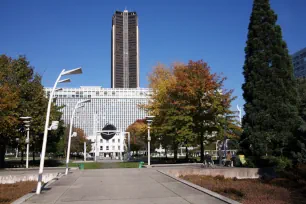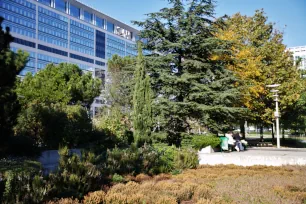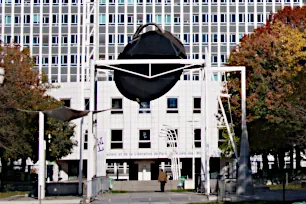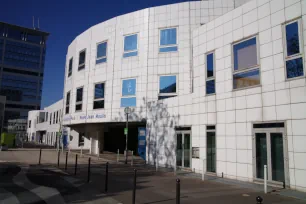The Jardin Atlantique is a public park built in the 1990s on top of the Gare Montparnasse, one of Paris’s main railway stations. The elevated park is enclosed by high-rises and is not visible from the street level.





The Montparnasse station is the starting point of the TGV-Atlantique, a high speed train which connects Paris with cities in Brittany and south-western France.
Hanging Gardens
In the early 1990s, a modern concrete railway station was built at the site of the older Montparnasse station. In 1994, shortly after its completion, a 3.4 hectare large park was built on top of the station’s rail tracks.
The creators of the park, architects François Brun and Christine Schnitzler and landscape architect Michel Pena, had to tackle several technical challenges in order to create this modern version of a Hanging Garden. Some of the obstacles that had to be overcome included the cleverly hidden integration of the air vents – 130 in total, and the limited amount of soil available, which ranges from 20 cm. depth for the grassland to 180 cm. for the trees. Weight distribution and limited daylight caused by the nearby high-rises were other factors that had to be taken into account.
Even if you know where the park is located, it can be hard to find the entrance since you can’t even see a glimpse of the park from the street. There are two elevators (in the rue du Commandant Mouchorte and the boulevard Vaurigard) but the easiest way to get to the park is from inside the train station, by ascending the stairs to the left of the first platform.
Atlantic Theme
The Atlantic coast, the destination of many trains departing from Montparnasse, provides the main theme of the Jardin Atlantique. There are wave patterns everywhere, and many plants in the park are native to the areas near the Atlantic Ocean. The park even has sand dunes and waterfalls. To complete the maritime atmosphere, there is also a sun deck and an ocean-themed playground.
At the center of the park is the ‘île des Hespérides’ (Island of the Hesperides), a bizarre modern structure. It is in fact a fountain that also serves as a weather station: it has a huge thermometer, a pluviometer (rain gauge), a wind vane and an anemometer (to measure wind speed).

Musée Jean Moulin
Mémorial Maréchal Leclerc –
Musée Jean Moulin
At the north end of the park is a museum with the rather long title ‘Mémorial du Maréchal Leclerc de Hauteclocque et de la Libération de Paris – Musée Jean Moulin’, which covers the history of the French resistance during World War II and the liberation of Paris.
The museum focuses on two individuals, Jean Moulin and Philippe Leclerc. Jean Moulin, an agent of Charles de Gaulle, managed to unite the isolated fractions of resistance networks and create a secret unified French army. In 1943, he was tortured to death by Klaus Barbie. Philippe Leclerc was a marshal who, together with the American allies, liberated Paris in 1944 from the Germans. The ceasefire was signed here, in the Gare Montparnasse.
- Next: Parc Floral
- More Paris Parks & Gardens
- More Sights & Attractions in Paris

